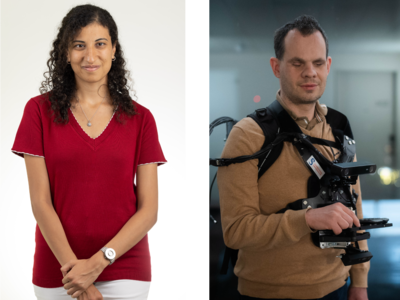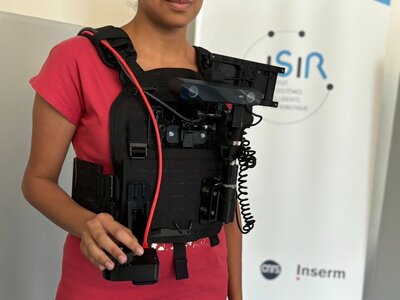
VIS / Vision Assistance Race
A-Eye
France
About the Team
The A-eye team is formed within Sorbonne University that aims to highlight the work and expertise of our students and cutting-edge research conducted within the university in a common federating project. The development of our solution is based on the work currently carried out by a dozen groups of students who all focus on specific challenges of the event.
The originality of our solution is to rely on the work done within the ISIR lab (Institut des systèmes intelligents et de robotique) on sensory substitution/augmentation via kinesthetic feedback.

About the Pilot
A-Eye team is lucky enough to have two pilots. The adventure began with Sébastien Hinderer, who took part in the co-design of the device from its very beginnings. Salomé Nashed then joined the team in a second phase, and will represent it in the October 2024 edition. She is now involved in the fine-tuning of the device.
Salomé Nashed is 28 years old and has been visually impaired since birth due to a genetic disease called Leber's amaurosis. Despite this disability, she has always been passionate about science, which she decided to make her career by becoming a researcher in biology. She is actively involved in making science accessible to visually impaired people, a cause that is particularly dear to her heart. She is very excited to participate in the Cybathlon, as she sees it as a great opportunity to raise awareness about disabilities and to encourage technological innovation that benefits people with disabilities.
Sébastien Hinderer is a Senior Software Engineer working on the OCaml compiler. He was born blind and got a PhD in natural language processing. He has a strong commitment to improving accessibility in various ways: he is involved in several non-profit organisations, contributes to several open-source projects, and is keen on testing new and innovative solutions that enhance visually impaired peoples' possibilities.

About the Device
Our device takes the form of a harness equipped with a kinesthetic feedback device. The system is divided into two parts:
- the measurement of the pilot's environment (analysis of the environment, detection of obstacles ...) is provided by cameras capable of measuring the distance of objects (as the Kinect did on the Xbox game console).
- a kinesthetic feedback device which is in fact a robot that moves a handle held by the pilot. This handle can move sideways. The goal is to guide the pilot through the analysis of the environment based on the measurements of the cameras. By moving the hand, we mimic the interaction that a visually impaired or blind person has with a guide.